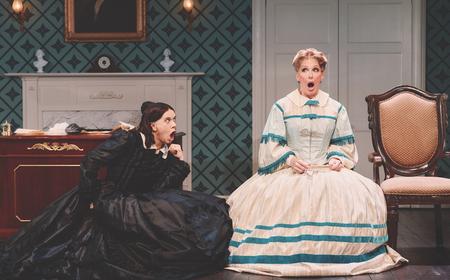
Part of becoming a model—especially a commercial model—is knowing what you’re talking about. So before you jump in front of the camera, here are some of the most important modeling terms you should know.
Body parts
Some models are hired not for their face but for their special features, such as having great legs, hair, hands, feet, etc.
Bonus
Models are generally paid an additional fee above their hourly or day rate if the ad is running in a “high-exposure format,” such as a poster, billboard, point of purchase, or online. Models can also receive bonuses if the ad will run for a long period of time or if the clients request exclusivity.
Book
A book is another term used for a model’s portfolio.
Buyout
Models are normally given additional money if the client wants to use the ad in perpetuity.
Cheating to the camera
This is when the model slightly turns his head and eyesight away from an object or the other model and closer to the camera. This gives the illusion that the model is looking straight at the other person or object but also allows the camera to see more of the model’s face.
 How to Become a Model
How to Become a ModelComposite sheet (comp card or zed card)
A comp card is a model’s business card. Unlike an actor’s headshot and résumé, a composite sheet shows a variety of the model’s photos along with her stats (height, eye color, hair color, etc.).
Editorial shot
A photograph that is used alongside an article in a newspaper or magazine.
Fit modeling
Fit models are hired to help designers test wardrobe for sizing.
Go-see
This is the term used when describing a model’s audition. When a model is contacted to attend a go-see, they go to a photographer’s studio or a casting facility and are seen.
Layout
Typically, the art director from an ad agency will create a sample concept for an ad. This guide is shown to the photographer shooting the ad as well as to the client for approval.
Model form
A model form is filled out by models when they attend a go-see. Basic contact info and sizes are normally requested in the form.
Model release form
A model release form is a legal document giving a photographer or advertising agency the rights to use the model’s image in an ad.
One-plus-one
This is when a model is booked for a one-hour modeling job with the possibility of working an additional hour. Models must hold the additional hour in case the shoot runs longer than expected.
Photo credit
This is optional in case the model wants to place the photographer’s name next to his or her photo on a composite sheet.
This is the term used for any still picture that is used in a printed format, such as newspapers, posters, magazines, etc.
 How To Find a Modeling Agent
How To Find a Modeling AgentRequest go-see
When a model is specifically asked to attend a casting for a print job.
Sign-in sheet
A plain paper that models use to write down their names. The sheet allows the photographer to know who is next in line to have their photo taken.
Square to the camera
The photographer will make this request when he wants the model’s face and body to be positioned straight into the lens.
Stock photography
Generic photographs that can be rented to companies or organizations in order for them to save money by not having to hire models and photographers when creating ads. These photos can also be used for editorial purposes. Some websites include Getty Images and Shutterstock.
Tear sheet
This is a copy of a commercial modeling ad. This proves the ad was published.
Test shot
A photo that is not being used as an ad, but instead, for a photographer’s or model’s portfolio.
Transit
The term used for posters on vehicles, such as buses, trucks, or on subways.
Transparent apparel
Clothing that is worn by a model that is considered see-through.
Usage
In modeling, usage is an explanation of how and where the ad will run, such as in newspapers, magazines, or on a poster or billboard, which are considered high-exposure formats.
Voucher
This is the bill or invoice that is used by models for all commercial modeling jobs. The agent and whoever is being invoiced for the job gets a copy, and the model should always hold onto this invoice.
Check out Backstage’s modeling listings!
The views expressed in this article are solely that of the individual(s) providing them,
and do not necessarily reflect the opinions of Backstage or its staff.




















